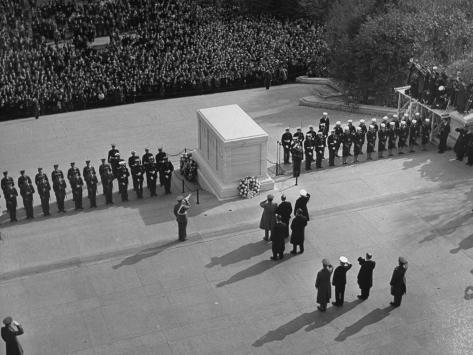 Memorial Day
Memorial Day is a
United States federal holiday which occurs every year on the final Monday of May.
[1] Memorial Day is a day of remembering the men and women who died while serving in the
United States Armed Forces.
[2] Formerly known as
Decoration Day, it originated after the
American Civil War to commemorate the
Union and
Confederate soldiers who died in the Civil War. By the 20th century, Memorial Day had been extended to honor all Americans who have died while in the military service.
[3] It typically marks the start of the summer vacation season, while
Labor Day marks its end.
Many people visit cemeteries and memorials, particularly to honor those who have died in military service. Many volunteers place an American flag on each grave in
national cemeteries.

Memorial Day is not to be confused with
Veterans Day; Memorial Day is a day of remembering the men and women who died while serving, while Veterans Day celebrates the service of all U.S. military veterans.
[5]
The preferred name for the holiday gradually changed from "Decoration Day" to "Memorial Day", which was first used in 1882.
[33] It did not become more common until after
World War II, and was not declared the official name by Federal law until 1967.
[34] On June 28, 1968, the Congress passed the
Uniform Monday Holiday Act, which moved four holidays, including Memorial Day, from their traditional dates to a specified Monday in order to create a convenient three-day weekend.
[35] The change moved Memorial Day from its traditional May 30 date to the last Monday in May. The law took effect at the federal level in 1971.
[35] After some initial confusion and unwillingness to comply, all 50 states adopted Congress' change of date within a few years.
Memorial Day endures as a holiday which most businesses observe because it marks the unofficial beginning of summer. The
Veterans of Foreign Wars (VFW) and
Sons of Union Veterans of the Civil War (SUVCW) advocate returning to the original date, although the significance of the date is tenuous. The VFW stated in a 2002 Memorial Day Address:
Changing the date merely to create three-day weekends has undermined the very meaning of the day. No doubt, this has contributed a lot to the general public's nonchalant observance of Memorial Day.[36]
Starting in 1987
Hawaii's Senator
Daniel Inouye, a World War II veteran, introduced a measure to return Memorial Day to its traditional date. Inouye continued introducing the resolution until his death in 2012.
[37]

On Memorial Day the
flag of the United States is raised briskly to the top of the staff and then solemnly lowered to the half-staff position, where it remains only until noon.
[38] It is then raised to full-staff for the remainder of the day.
[39]
The half-staff position remembers the more than one million men and women who gave their lives in service of their country. At noon their memory is raised by the living, who resolve not to let their sacrifice be in vain, but to rise up in their stead and continue the fight for liberty and justice for all.

